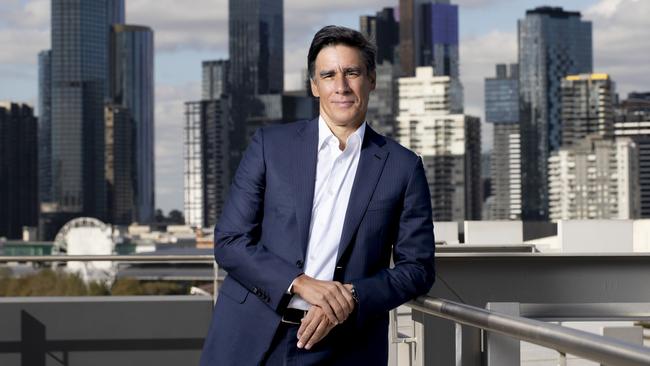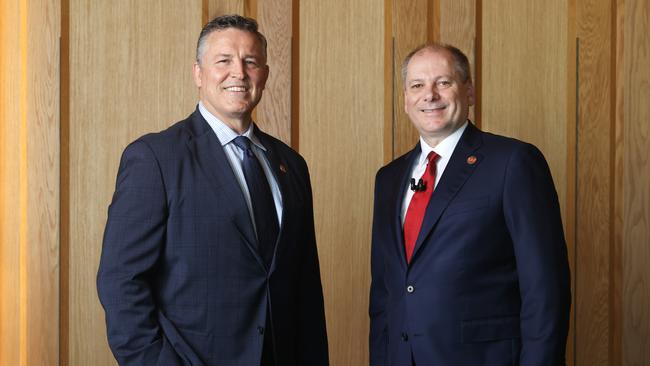The share market believes all the banks will come out of the revolution in good shape with more profits. History tells us that in fundamental industry upheavals, not all the participants win.
The revolution will go under the tag of artificial intelligence, but that’s only part of it. Banks are going to change the way they administer, market, finance and use branches. Part of the change will involve facing the mistakes of previous CEOs.

Revolution one: regaining returns on the biggest bank business, home loans.
CEOs of most of Australia’s four big banks now realise that to boost short-term profits and gain institutional blessings, past bank CEOs made a fundamental mistake, they lost control of home loan borrowers – a large and important portion of their customer base.
Past bank CEOs saw branches as costly appendages and went on branch closing binges.
The mortgage brokers could not believe their good fortune (and the banks’ short-sightedness) and happily acquired the majority of most of the banks’ housing loan customers.
The big banks became customers of the mortgage brokers. Short-term bank profits soared because the brokers operated more efficiently than the banks.
But the profit margin on home loans has slumped by about a third and the broker commissions have not changed, so bank profitability on new home loans is low. In some cases there are losses.
Banks have suddenly woken up that a lot of home loan activity is on the weekend, when the bank branch selling network is shut. We are going to see mortgage selling bank branches in big shopping centres opening at the weekend when customers are passing the door. AI intelligence will streamline the home lending practices and there will be greater marketing to secure bank loans online.
But for many home loan customers, loyalty is to the broker and not to the bank, and in some cases up to 60 per cent of big bank housing loans are via brokers. CBA is around 45 per cent. A number of the banks, including CBA, are recruiting key mortgage broker people plus other selling staff.
In business banking, NAB has held its market share, but CBA has taken share from ANZ and Westpac and is now not far from NAB. As in home loans, banks are recruiting people to restore their business bank lending skills.
Banks will need to devise innovative marketing methods via AI to widen their borrowing customer base and be much closer to what is happening to customer finances.
Revolution two is AI and administration
Banks are reviewing their entire operations to determine where to embrace AI. The area where the biggest changes will take place are head offices, and large areas of administrative activity will be taken over by AI.
The first major off the blocks was Westpac, with staff cuts and a declaration that it would target a cost-to-income ratio below other major bank rivals in four years.
Westpac’s declaration has provided the trigger for an interbank cost reduction competition. This competition will spread to other areas of Australian corporate life, and the consequent revolution will impact universities because the initial routine tasks performed by graduates will be taken over by AI.

But the most obvious target is where routine work is performed at home. I emphasise that in many situations, working from home flexibility makes a lot of sense for both the company and the staff member.
But if a large enterprise is planning to reduce its administrative workforce by, say 25 per cent, via AI, then those that were once needed in the office, and did not want to be there, will be among the first to go.
Those who own office blocks and CBD restaurants are hoping that office people will return to working in the city. Some will return, but in far lesser numbers because AI will have taken the jobs.
Revolution three: call centres and marketing.
Smaller Australian enterprises are now embracing AI in their call centres and are finding it works in the vast majority of situations.
Outside banks and commerce, AI is now being used to help people in distress.
Sorting out bank problems is much easier than personal distress, and we are going to see massive reductions in bank and non-bank call centre operations both in Australia and overseas.
The use of AI in marketing goes much further than call centres, and we are about to see many new digital marketing schemes emerge.
Revolution four: regulations
Regulations will require a reduction in the use of hybrid equity securities and a rise in unsecured bank loans in the money market.
The turmoil in the US also impacts bank borrowing costs because banks are substantial borrowers on US and world markets. In most cases, their borrowings are linked to short and longer term US bonds. The banks spread their loan maturities, so current US bond rates take time to impact.
Revolution five: retail investors
Australia’s smaller and medium-sized companies are now relating to retail shareholders. Big banks have not yet woken up if Jim Chalmers sticks with his disastrous unrealised gains tax, there will be big selling of bank shares by self-managed funds. This will make the banks more dependent on big institutions.
But if the treasurer abandons his tax, it will open the way for better understanding between banks and retail investors in line with smaller enterprises.






Australia’s big banks are preparing management for fundamental and unprecedented change. ANZ and Westpac have changed chief executives and there are also significant lower level moves including poaching of talent.